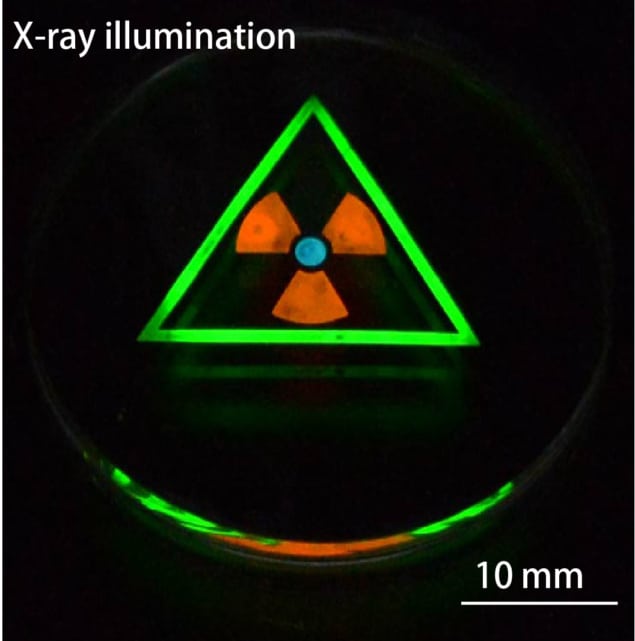All-inorganic perovskite nanocrystals illuminate the future of scintillators

Understanding and advancement of scintillation, the conversion of photons to visible fluorescence, is key to many fields including medical radiography, radiation exposure monitoring, and X-ray astronomy. While conventional scintillators have reached their performance limits, new research shows the potential for cesium lead perovskite nanocrystals to revolutionize X-ray detection.
Led by at the National University of Singapore, this recent experimental study highlights the capability of these nanocrystals to perform multicolor X-ray scintillation. Their color tunability arises simply by varying the halide of the material among bromine, iodine, and chlorine.
Perovskites have already been explored for X-ray technology, but previous studies focused on the use of bulk hybrid organic-inorganic perovskites (HOIP) for the direct conversion of X-rays to current. Here, they instead offer an alternate route to advancing X-ray technology by indirect conversion of X-rays to current, using completely inorganic perovskites as scintillators and coupling them with existing detectors.A new direction for development
While the group considered exploring HOIP materials for scintillators, Liu said they do not have the crystallinity required to perform scintillation efficiently. Compared with conventional, commercial CsI:TI scintillators, however, the team’s inorganic perovskite scintillators displayed higher imaging resolution and faster X-ray response.
The researchers showed the scintillator’s capabilities by capturing an image of an iPhone’s interior with and without their scintillator attached to the X-ray detector.
“We just replaced the scintillator already installed in the device and did the same experiment – a typical measurement,” Liu said. “In the same device with no scintillator, we didn’t see anything.”
Low-cost and high reward
The perovskites are also low-cost and solution processible, offering an economic advantage to their development on top of their technological superiority. Remarkably, the perovskites were stable in ambient X-ray imaging conditions, overcoming issues of stability that plague research exploring the use of perovskites LEDs and photovoltaics. Under high level X-rays for five days, the study showed that photostability remained unchanged.
While Liu says it is still important that they test their material for longer times and at different temperatures and humidity levels, overall he feels their work is very promising. In the future, these materials have the potential for flexible, portable X-ray imagers. Already, they were able to take X-ray images with just a standard digital camera.
More details can be found in Nature doi: 10.1038/s41586-018-0451-1.
10/9/2018 FROM PHYSICSWORLD.COM
Δεν υπάρχουν σχόλια:
Δημοσίευση σχολίου